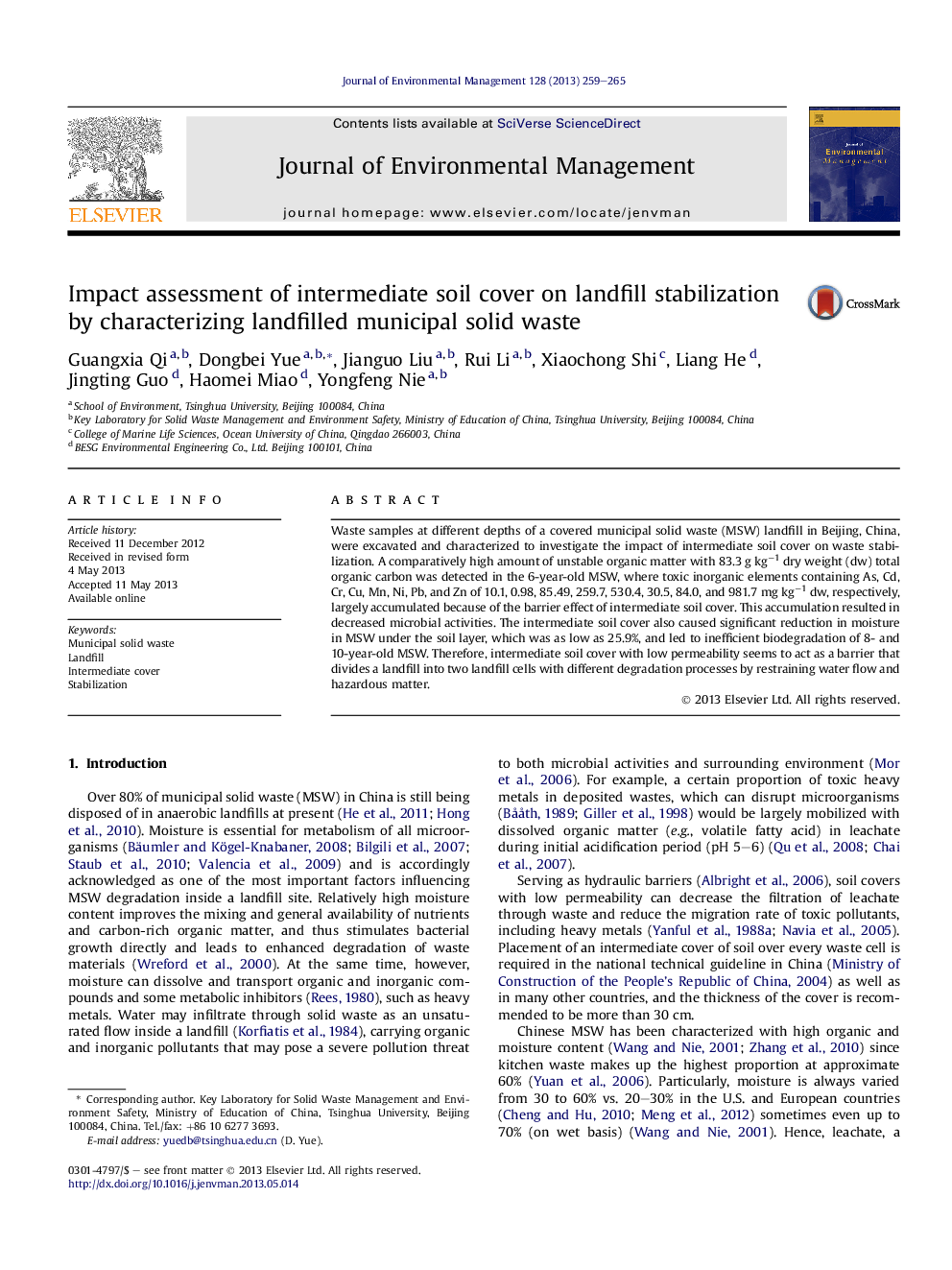| Article ID | Journal | Published Year | Pages | File Type |
|---|---|---|---|---|
| 7484220 | Journal of Environmental Management | 2013 | 7 Pages |
Abstract
Waste samples at different depths of a covered municipal solid waste (MSW) landfill in Beijing, China, were excavated and characterized to investigate the impact of intermediate soil cover on waste stabilization. A comparatively high amount of unstable organic matter with 83.3 g kgâ1 dry weight (dw) total organic carbon was detected in the 6-year-old MSW, where toxic inorganic elements containing As, Cd, Cr, Cu, Mn, Ni, Pb, and Zn of 10.1, 0.98, 85.49, 259.7, 530.4, 30.5, 84.0, and 981.7 mg kgâ1 dw, respectively, largely accumulated because of the barrier effect of intermediate soil cover. This accumulation resulted in decreased microbial activities. The intermediate soil cover also caused significant reduction in moisture in MSW under the soil layer, which was as low as 25.9%, and led to inefficient biodegradation of 8- and 10-year-old MSW. Therefore, intermediate soil cover with low permeability seems to act as a barrier that divides a landfill into two landfill cells with different degradation processes by restraining water flow and hazardous matter.
Related Topics
Physical Sciences and Engineering
Energy
Renewable Energy, Sustainability and the Environment
Authors
Guangxia Qi, Dongbei Yue, Jianguo Liu, Rui Li, Xiaochong Shi, Liang He, Jingting Guo, Haomei Miao, Yongfeng Nie,
